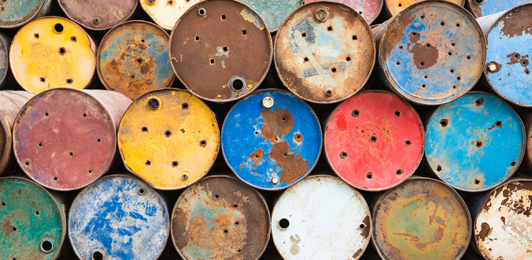We are pioneers in Scientific disposal of Hazardous waste through collection, storage, packaging, transportation and treatment, in an environmentally sound manner to minimize the adverse impact on human health and on the environment. Hazardous waste such as lead acid battery scraps, used oil, waste oil, spent catalyst etc. and other waste such as waste tyres, paper waste, metal scrap etc. are used as raw material by the industries involved in recycling of such waste and as supplementary resource for material and energy recovery. We are conversant with all methods of disposing hazardous waste as there are different types of waste and various laws governing them.
- Need Help? Talk To An Expert: +91 8291055055
- Email us: info@ecostarrecycling.com
Hazardous Waste Management
- Home /
- Hazardous Waste Management
Hazardous Waste Management

Hazardous Waste Process
Give hazardous Waste under our guard!!!
Many business units or consumers cannot dispose in regular thrash or down the drain, some of the wastes that are listed as hazardous. Process of collection of Hazardous waste
Eco Star takes the complete responsibility of disposing Hazardous waste staring from Accumulation to final Disposal

Accumulation
The hazardous waste must be accumulated and stored at the point of generation
Collection
Collection of Hazardous waste is done by professionally trained staffs only. These staffs are not only knowledgeable but also are aware of all hazardous waste rules. These accumulated wastes must be collected in compatible container. The container should be so compatible with its content under all conditions that it might be subjected to during accumulation, storage and shipment. The container should be tightly sealed even at the time of adding water to it.
Each container is labelled with details like
1.Type – Hazardous waste
2.Chemical type/Description
3.Identificaion number
4.Identification Mark etc.
Transportation
Eco Star has the necessary authorization for handling transportation of Hazardous waste. We assure that what every way the HW are transporter, the driver, helper etc. are well trained to handle HW. They have the necessary license from pollution control board. The containers are leek proof and are strong and roust that no accident happens at the time of loading and unloading. We offer both types of Transport
1. Bulk Transport
2. Non-Bulk Transport
Storage and Segregation
We assure safe and sound storage of all Hazardous waste. We are aware of proper pre checks before executing the storage of H waste.
⮚ Any H waste should not be left un labelled at the proposed site location.
⮚ Proper checks on fire /smoke detection, spill proof systems, firefighting system.
⮚ Flammable, ignitable, reactive and incompatible wastes are a stored separately are never stored in the same storage shed. Storage area may consist of different sheds for storing different kinds of incinerable hazardous wastes and sheds should be provided with suitable openings.
⮚ Loading and unloading of wastes in storage sheds is done under the supervision of the well trained and experienced staff.
⮚ The storage areas are inspected daily for detecting any signs of leaks or deterioration. If any, Leaking or deteriorated is found removed and ensured that such contents are transferred to a sound container.
⮚ Technical Hazard analysis and safety audit for every storage facility, a preliminary hazard analysis should be conducted on timely basis
DISPOSAL OF H WASTE
Disposal of H waste can happen in two ways
- Land Fills
- Incinerations
Land Fills
We are the Land fill service provider beyond expectation!!
Landfills of H waste are more stringently regulated. In spite of having its share of draw backs, landfills are still safer then incinerators.IN land fills relatively large amount of methane gas is emitted, so we assure that these are properly sealed. Proper check is kept so that they do not spoil the environment, surrounding land or water bodies.
Precisely landfills are carried out
- By layering waste in a large hole.
- As materials decompose, landfill gas experts continuously monitor groundwater to detect any
- The bottom of a modern landfill is typically lined with compacted clay, dense enough to prevent liquids from penetrating it. On top of the clay, landfill engineers install a liner made of high-density plastic for added protection.
- Perforated pipes are installed on top of the liner to collect these liquids—known as leachate—and funnel them to treatment facilities, either onsite or at wastewater treatment plants.
- Modern landfills work to turn methane into power using gas extraction wells that pipe it to treatment areas and then to plants that will turn it into electricity or other forms of energy.
INCINERATION
- For more than two decades, incineration method is applied to dispose H waste. Incineration is an engineered process that employs thermal decomposition via thermal oxidation at high temperature (usually 900°C or greater) to destroy the organic fraction of the waste and reduce volume. Generally, combustible wastes or wastes with significant organic content are considered most appropriate for incineration.
